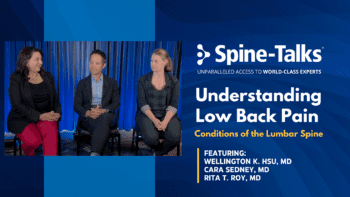SPINAL STENOSIS IS A COMMON CONDITION IN WHICH THE NERVES LOCATED IN THE SPINAL CANAL BECOME COMPRESSED.
The spine is a long, hollow tube that has multiple openings to allow for the passage of the spinal cord and nerve roots. Over time, bone, ligaments, and discs can constrict the canal. This narrowing can occur anywhere within the spinal column and while stenosis can occur in the neck, it most commonly occurs in the lower back (75% of cases).
CAUSES
- General wear and tear
- Aging
- Previous injuries
- Congenital defects
- Trauma
- Tumors
SYMPTOMS
- Neck: Numbness in the neck, shoulders, or arms that leads to cervical myelopathy
- Lower Back: Cramping or pain in the back, buttocks, thighs, or calves with decreased walking tolerance and weakness (sciatica). Symptoms will likely get worse when the patient is standing or walking and the patient will usually feel relief upon sitting or leaning forward. Walking for a long period of time may be difficult.
DIAGNOSIS
Diagnostic imaging studies for patients with neck stenosis or low back stenosis include either an MRI scan and/or a CT scan with myelogram.
TREATMENT
Conservative treatment options include anti-inflammatory medications, physical therapy, chiropractic treatments, and injections. Surgery is considered when other conservative methods fail. Surgical options include fusion of the bones in the spine, opening the space to relieve pressure from the compressed nerve, and removing bone to decrease pressure on the spinal cord.



